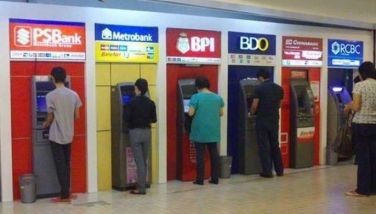Risks in debt condonation

Debt condonation is a tricky matter. If an apartment tenant accumulates over six months of unpaid back rent, the landlord has no recourse but to evict the renter, throwing out the whole family and their belongings to the streets. Chances are, the evicted tenant will find a new place to rent, but will fall into the same eviction cycle in short time.
Why? Often, the negligent tenant is in the midst of substandard productivity, where wages or earnings are not enough to sustain his needs. Desperation to provide a roof over his head urges him to continue looking for new lodgings, even if he knows that the rent payment will not be paid on time after a few months.
A closer look into the our government’s generosity of condoning over P57 billion worth of unpaid amortization and interest payments on land that had been awarded to more than 600,000 agrarian reform beneficiaries, most being farmers, elicits the same uneasiness.
While debts are, indeed, one of the major problems that many poor Filipino farmers face, wiping them off the slate does not promise a fresh start that would lead to, in the President’s words, “a life beyond mere survival, a life free from hunger or fear of the future.”
Farmer groups, not surprisingly, are overjoyed by the signing into law of the New Agrarian Emancipation Act (NEAE), with some even going as far as to say that the new law signifies the existence of social justice, and that this will allow our impoverished farmers to start anew.
‘Just the first step’
To be fair, the President has qualified that the loan condonation is just the first step in his promised agrarian reform pledge, one that will lead to the country having more sustainable farms and for farmers to reap better incomes.
So far, we’ve heard the President basically laying out his plan to revitalize the agriculture sector through the training of a new generation of young farmers “who will become the driving force behind a modernized and profitable agriculture sector that fuels sustainable rural development.”
Glossed over are the basic and still critical problems that Filipino farmers face: the poor implementation of a surfeit of agricultural policies that promise productivity, compounded by low levels of technology adoption and small economies of scale.
These are problems that require more than the enticement of a young breed of Filipinos to till the land and make it sustainable and productive. They will likely end up living the doomed poverty-plagued lives of their elder farmer counterparts, that is, if they don’t give up soon enough.
It’s the system, Mr. President, one that needs to be understood in a historical context that dates back to the time of your most venerated father, the former president Ferdinand Marcos Sr. and his ambitious Masagana 99 rice self-sufficiency program.
Studies have shown that Filipino farmers’ huge debt problems started with the government’s incentives to raise rice land productivity using technology inputs, production loans, price support for rice, and the introduction of fertilizer subsidies.
As it turned out, the Masagana 99 credit program was ineffective in delivering the cheap loans that farmers needed to pay for fertilizers, pesticides, and other interventions aimed at raising land productivity. In the end, farmers were saddled with debts and found themselves poorer.
‘Social justice’
Yes, NEAE is “social justice” if one were to consider that the start of such huge indebtedness (about P2 billion in the late ’70s) of Filipino farmers was caused by Masagana 99 and the government’s over-ambitious, poorly thought-out plan.
The loans remained outstanding for decades, growing to proportions that became impossible to repay, that many resorted to private lenders’ usurious interest rates, selling off land, sending their children to work in the city or abroad.
After Masagana 99, the government introduced several laws aimed at reforming and revitalizing Philippine agriculture. As it turned out, the stipulated P20 billion a year appropriated in the 1997 Agriculture and Fisheries Modernization Act (AFMA) until 2015 was not fully made available. More importantly, whatever was released was eaten up by graft and corruption.
In 1998, the Comprehensive Agrarian Reform Law (CARP) aimed at distributing nine million hectares of land to the landless was passed. This, too, was saddled with implementation and enforcement problems, leading to its failure.
Agriculture insurance Philippine-style also had its limitations, and as farm lands and crops became more vulnerable to devastation from floods, drought, and strong typhoons, farmers found little relief from the so-called insurance coverages.
Grief had come to Filipino farmers one after the other, year after year. No wonder then that their children were divorcing their future from the land that had previously sustained older generations of farm families.
New interventions
Debt condonation could be a good starting point, but it should come with clear steps that will allow farmer beneficiaries to capitalize on new interventions to seize a fresh lifeline to a better life.
Promising farmers continued support is not going to make the cut, because the support system is virtually non-existent. No new policies on credit extension have been laid out, with existing ones still plagued by bureaucratic inefficiencies.
Agricultural extension workers continue to be outnumbered by farmers who need help. It can take years before this mismatch in resource is resolved at both the local and national government levels.
Meanwhile, the newly “emancipated” farmers will realize that they will have to go back to usurers to secure their next farming implements, and that a possible drought brought by El Niño later this year can only add up to the debt left untouched by NEAE.
Facebook and Twitter
We are actively using two social networking websites to reach out more often and even interact with and engage our readers, friends and colleagues in the various areas of interest that I tackle in my column. Please like us on www.facebook.com/ReyGamboa and follow us on www.twitter.com/ReyGamboa.
Should you wish to share any insights, write me at Link Edge, 25th Floor, 139 Corporate Center, Valero Street, Salcedo Village, 1227 Makati City. Or e-mail me at [email protected]. For a compilation of previous articles, visit www.BizlinksPhilippines.net.
- Latest
- Trending































